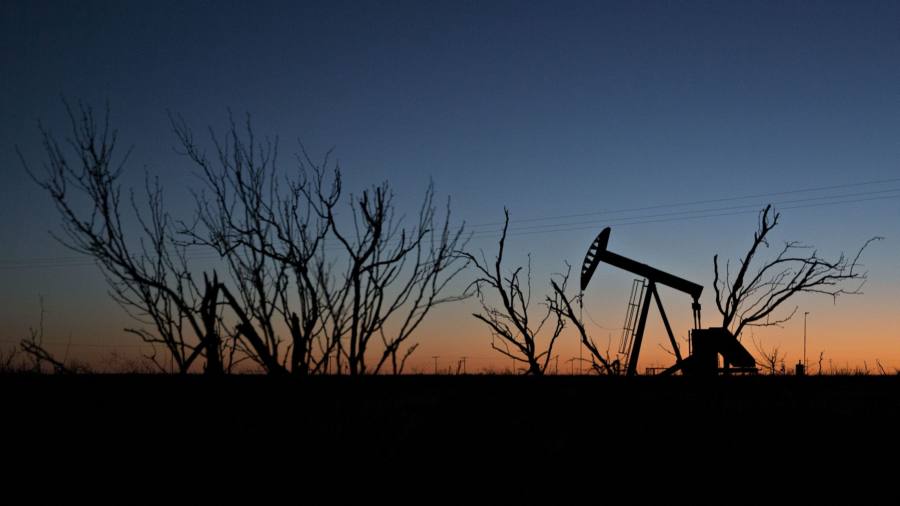Receive free Shale Oil & Gas updates
We’ll send you a myFT Daily Digest email rounding up the latest Shale Oil & Gas news every morning.
The prolific US shale oil and gas industry is decelerating in the face of weakening commodity prices, suggesting production growth will stall at a time of booming demand.
Evidence of stagnating activity is mounting. A survey by the Federal Reserve Bank of Dallas posted a score of zero for business activity growth in the second quarter among some 150 oil and gas groups in its region — suggesting any expansion had hit a wall. It was the lowest score since 2020, when an oil price crash during the coronavirus pandemic forced operators to slash headcounts and idle drilling rigs.
On Friday, data showed that the number of drilling rigs deployed across the country had fallen for the eighth week in a row, according to Baker Hughes, an oilfield services company.
“Weak oil and gas prices” and “high costs” had “brought growth in oil and gas activity to a standstill in the second quarter”, said Michael Plante, senior research economist and adviser at the Dallas Fed.
US natural gas prices have slid from more than $6 per million British thermal units a year ago to less than $3. Brent crude, the international oil price benchmark, sat at about $74 a barrel on Friday, down more than a third since this time last year.
With average producers needing an oil price of $66 a barrel to break even this year, according to HSBC, that is barely enough for many drillers to turn a profit.
American oil output is still rising, however, driven by the prolific Permian Basin of West Texas and New Mexico, and may even hit a new record high later this year, according to the US Energy Information Administration.
But those volumes reflect drilling decisions taken months ago, when oil prices were higher. The fall in drilling activity since then suggests any spurt in output will be shortlived. Shale output requires ever more drilling just to hold output steady, with new production tending to come on line months after wells are fracked.
As the world guzzles increasing volumes of oil, any deterioration in US production growth is all alarming, given that the country has been main source of added supply in recent years.
Among the issues weighing on the shale patch’s ability to grow are commodity prices, worker shortages, investors’ insistence on returns and growing fears that shale rocks, which made the US the most dynamic producer in the world, are becoming increasingly less productive.
Escalating costs for everything from well casing to pressure pumping equipment are also biting into profit margins.
“Expenses for everything have increased dramatically, while . . . prices remain weak,” said one executive surveyed by the Dallas Fed. “It seems as if the break-even price for oil is in the mid-$70-per-barrel range at this point. I would drill if costs were not so high.”
Some have pointed out that oil companies are able to produce more oil with fewer rigs. But EIA data has shown a sharp decline in new oil production per rig, as output from once prolific basins slides.
“You definitely have mature plays, like the Bakken and the Eagle Ford where it’s kind of run its course,” said Nathan Nemeth, an analyst at consultancy Wood Mackenzie, referring to basins in North Dakota and Texas. “They’re not really the growth engines anymore.”
US oil production, which soared by almost 2mn barrels a day at the height of the shale revolution between 2018 and 2019 is set to grow by just 200,000 b/d over the next 12 months — with practically all of that growth coming from the Permian, as other basins dwindle.
The number of oil and gas drilling rigs in the field last week fell for the eighth week in a row, sliding to 682, leaving the count down by more than 100 in the past six months.
That trend could reverse if oil prices rally in the latter part of this year, say analysts, but with the threat of recession looming over the global economy, that is far from a guaranteed outcome.
“We’re not certain of what to expect,” said one Dallas Fed survey respondent. “The highs were too high. The lows too low.”
Read the full article here



